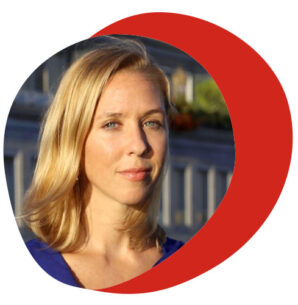Discussions about diversity, equity and inclusion often center around numbers and quantitative progress. But managing people is an art, not a science, and inclusion is closely tied to authenticity.
“Inclusion in the work environment is a feeling of people being welcomed and valued in the organization,” says Tiffany Davis, Chief Inclusion & Diversity Officer, ADP. “That has to take into consideration the diversity of people, and people bringing their whole selves to work, as much as they feel comfortable.”
Employers are increasingly trying to create more authentic workplaces where employees feel freer to act like themselves — and less pressured to adopt a separate, professional persona. With many hybrid and remote employees reluctant to return to the office, organizations are ramping up efforts to bring more of the psychological comfort and ease of home into the workplace.
These efforts raise important questions about how employers can foster trust so workers feel comfortable being their authentic selves. Striking that careful balance between promoting authenticity and being invasive largely depends on the cultural context at hand.
Raising the authenticity stakes
In much of the world, the battle over return-to-office policies has reached a fever pitch.
For months, companies have been asking their employees to come into the office at least three or four days per week. And yet, offices have remained stuck for more than a year at just half their pre-pandemic occupancy. The reason is simple: workers have experienced the freedom and flexibility of remote work, and many don’t want to give up that work-life balance by returning to the office. Some employers, on the other hand, have found it difficult to track productivity and promote collaboration among dispersed workers.
As a result, some companies have announced plans to punish remote work. After office perks like free food didn’t lure back workers, organizations are making it clear that employees who don’t show up in the office as much as expected will have their attendance addressed in performance reviews.
But some companies haven’t given up on the carrot approach. In an effort that goes deeper than daily perks, they’re attempting to transform their corporate culture so the office becomes a place employees want to be: They’re trying to make their workplaces more authentic. According to the London School of Economics, that means fostering an environment where workers “feel they are able to express or operate in accordance with one’s genuine values, beliefs, motivations, culture and personality, among colleagues, managers, clients and other stakeholders equally.”
Trust fosters authenticity,
which in turns deepens trust.
Studies show that achieving workplace authenticity is a win-win: workers are happier, healthier and higher-performing, the London School of Economics reports. Authenticity, which is a product of inclusive leadership, also leads to more engagement, higher job satisfaction and better retention of talented workforces, says Prof. Youngsun Paik, Director of the Center for Asian Business and the Center for International Business Education at Loyola Marymount University in Los Angeles.
“Authenticity is an outcome derived from a corporate culture. It’s the result of hard work to try to shape a corporate culture that values psychological safety, trust, belonging and inclusion,” Paik says. It requires healthy relationships both horizontally and vertically within organizations, with workers at all levels who don’t mind showing vulnerability or weakness.
In other words, authenticity and trust are part of the same feedback loop: trust fosters authenticity, which in turns deepens trust.
Trust as a two-way street
Genuinely authentic workplaces require serious buy-in from both sides: employers need to foster trust, and employees need to respect the rules of civility.
And there is a learning curve for managers. “We sometimes forget that leaders don’t know how to do this overnight,” Davis says. “Ultimately, leaders are focusing on business results, but the most successful and appreciated leaders are the ones who get to know the people as the humans they are.”
Employees also have to make an effort to listen to and respect their colleagues and consider differing points of view. “Role modeling comes into play,” Davis says. “What you learn about a work environment comes from your manager, and people make decisions based on behaviors they see in the environment. Do you feel comfortable with bringing your whole self into work?”
Leadership training should focus on building relationships that are deeper than just the associate relationship to get results. “It takes courageous conversations about different life experiences,” Davis says.
All too often, people in majority groups are allowed to be themselves, while others are penalized based on stereotypes — or because of bias toward a narrow set of characteristics that supposedly define professionalism.
Many members of marginalized groups have reported that working from home offered a respite from workplace discrimination, especially microaggressions, subtle and unintentional — yet nevertheless harmful — discriminatory statements and actions that can pile up throughout the day. At home, people of color, disabled workers and neurodivergent workers have found they are freer to be themselves without experiencing prejudice, improving their well-being and saving them valuable time and energy for their work.
And managers need to be sure to respect boundaries if associates would rather keep parts of themselves private. “People continue to evolve, and their most authentic self evolves. Discussions of the meaning of diversity have evolved in the past decade,” Davis says. “Ultimately, on the journey of developing an inclusive culture, mistakes will happen along the way. Someone says the wrong thing or reacts the wrong way. It’s important for grace to be given as you’re creating these environments.”
Cultural implications
Authenticity is a highly subjective concept that requires cultural nuance. In many parts of Asia, for example, employees want to be true to their personalities, says Paik of Loyola Marymount University. They would embrace the freedom to be themselves at work, with the flexibility to dress how they want and take breaks when they need them.
But Asia doesn’t have the same concept of authenticity as in the west, Paik adds. When Paik, who is originally from South Korea, moved to the U.S. 40 years ago, he found “authenticity” was a nebulous word that was difficult for him to grasp. Instead, there are Korean words that are more similar to integrity or honesty that encapsulate the idea of being true to oneself.
And regardless of what it’s called, the desire to express one’s whole or true self can be at odds with important parts of Asian business culture, Paik says — namely, the desire to save face in what is often a hyper-competitive work environment.
“In Japan, and to some extent in Korea and other Asian countries, the separation between your work self and your real or personal self is strongly influenced by Confucianism,” Paik says. “Confucianism emphasizes harmony and loyalty to avoid conflicts and disputes.”
As a result, many people will put on a type of façade — called tatemae in Japanese — instead of expressing their honne, or true feelings and desires, in order to keep the peace. People in the west also adopt work personas, but without the same pressure to avoid conflicts and save face, the gulf between the two sides of one person isn’t as great, Paik adds.
Thanks in part to the competitive work environment in Asia, which prizes long hours and maximum facetime, convincing employees to return to the office hasn’t been as challenging in Japan and South Korea as it has been in the U.S. Employees at big companies are also much more loyal to their employers and much more socially connected to their colleagues, Paik says.
“Authenticity is defined by the individual person, and it’s a journey.”
Tiffany Davis, ADP
But that doesn’t mean they don’t want authenticity. Millennials and Gen Zers especially want to change the grueling culture at Asian multinationals. And during the pandemic, nowhere was it clearer than in Asia that employee physical and mental well-being has to be made a priority in order for them to perform at their best.
“Saving face is the game they play, but the most important thing is people want to behave naturally and show themselves as they are,” Paik explains. “This is true in the east and the west. The pandemic has been a tipping point; we realized it’s important to see people as they are.”
In the end, it’s about creating environments where people can be their best selves. “Authenticity is defined by the individual person, and it’s a journey,” Davis says. “We’re creating spaces that make people comfortable to continue to show up as themselves.”
Read more
Sign up to keep up to date with ReThink Q.







